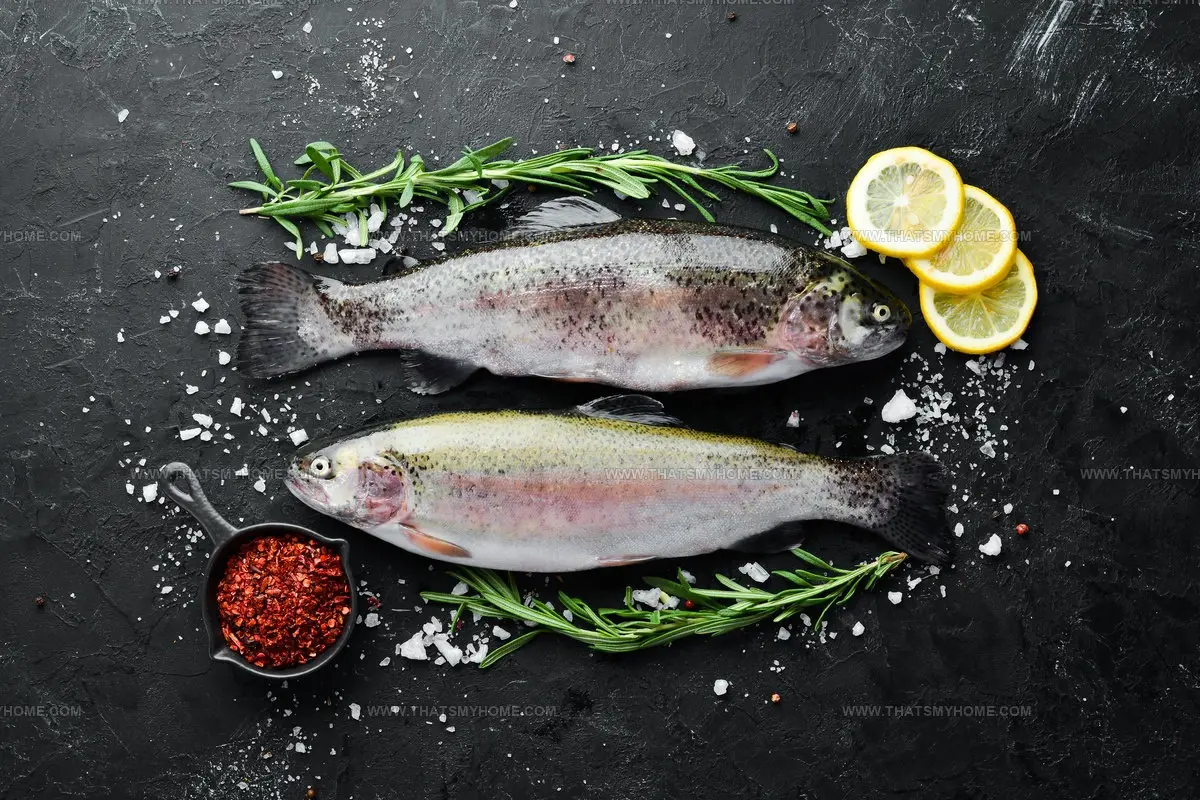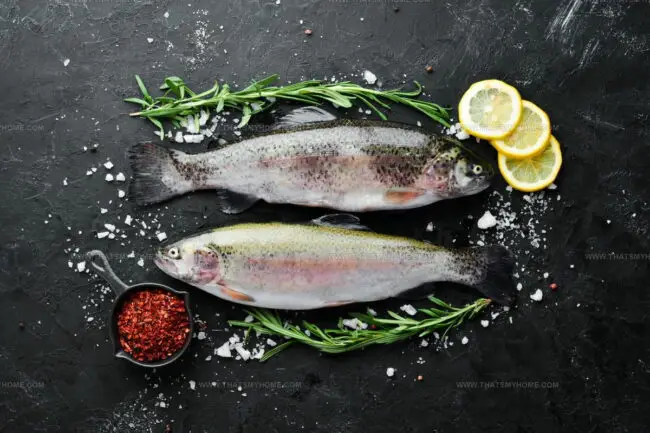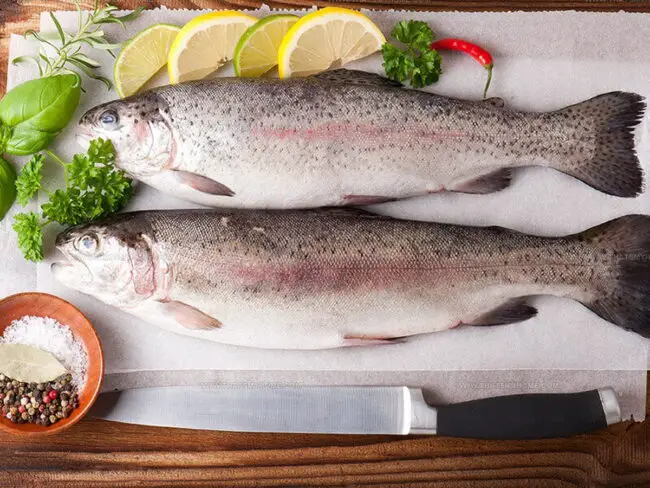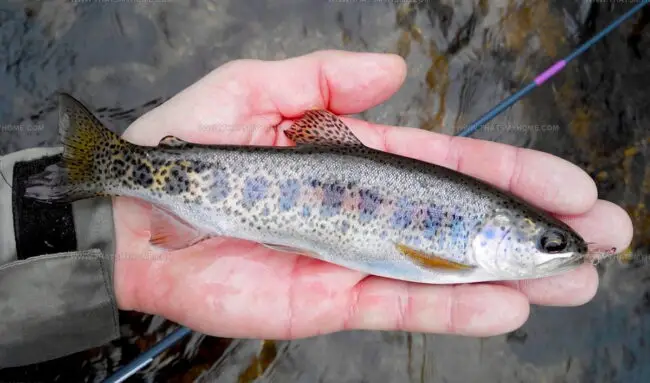What Does Rainbow Trout Taste Like? Fishing for Flavors!
Rainbow trout swimming through mountain streams might seem like just another fish, but this culinary delight holds secrets that spark curiosity among food enthusiasts.
Anglers and seafood lovers often wonder about the unique flavor profile of this popular catch.
Wild and farm-raised varieties offer distinct characteristics that intrigue palates across different regions.
Delicate yet distinctive, this fish carries nuanced qualities that set it apart from other aquatic proteins.
Seafood connoisseurs appreciate its subtle complexity, which makes it a versatile ingredient in various cuisines.
Understanding the taste of rainbow trout involves more than simple description - it requires sensory exploration and appreciation of its natural essence.
Your culinary adventure begins with unraveling the delectable mystery behind this remarkable fish.
Introduction to Rainbow Trout
Rainbow trout swim in lakes and rivers across North America. Closely related to salmon, these small fish typically measure 20 to 30 inches long and weigh around 8 pounds.
Rare cases show them reaching 4 feet and weighing 53 pounds, but such giants are uncommon.
Marine environments rarely host rainbow trout, with only a few adult steelheads venturing into salty waters.
Redband trout serves as another name for this fish species. Color patterns vary widely depending on capture location, age, and spawning conditions.
Two fish from the same breed might look completely different.
Distinctive features help identify rainbow trout:
Seafood lovers appreciate rainbow trout for its availability and reasonable price.
Flavor Profile of Rainbow Trout
Rainbow trout carries a mild flavor with nutty hints.
Compared to other fish, it brings a salty and slightly greasy taste.
Its meat looks flaky and light in color.
When something seems fishy about its taste, that might signal spoilage.
Still, this fish remains worth sampling and sits easily findable at local markets.
Fish meat feels smooth and breaks apart gently when cooked correctly.
Despite its rich feeling, trout contains helpful omega-3 fatty acids that combat body inflammation.
Whitefish like haddock, cod, tilapia, pollock, flounder, and halibut show more fat content than rainbow trout.
Higher fat levels give trout a deeper taste and help it handle multiple cooking styles.
Salt works well when pan-frying to highlight trout's special flavor.
Trout meat can appear pink, deep orange, or soft orange-white depending on purchase.
Fish color stems from breeding conditions, eating habits, and surrounding environments.
Flavor stays consistent regardless of its specific shade.
Shoppers seeking a fatty fish with mild taste, delicate texture, and good value should consider rainbow trout.
Things That Change Rainbow Trout Taste
Rainbow trouts enjoy a mix of snacks from their underwater world.
Insects, small water plants, other swimming creatures, and items found at the lake bottom create their menu.
Wild trout develop a special mild and nutty taste when they find a good balance of these different food sources.
Farm-raised trout might have different meals that could change how they taste.
Water conditions play a big role in making rainbow trout delicious.
Trout swimming in murky water can pick up an earthy or muddy flavor.
Some fishers have even said they caught fish that taste exactly like dirt.
Catching trout from clean, clear streams makes a huge difference in their flavor.
Shopping from trustworthy sellers helps ensure you get trout with the best possible taste.
Rainbow Trout vs. Salmon
Salmon and rainbow trout share similar qualities when their traits are side by side.
Their close connection makes sense since they belong to the same fish family.
Key differences exist between salmon and rainbow trout.
Salmon carries a richer, nuttier taste with deeper flavor notes.
Rainbow trout offers a milder, gentler profile that works well in many kitchen settings.
Chefs appreciate trout's adaptable nature and soft flavor, making it an excellent choice for different cooking methods.
Swapping salmon for rainbow trout depends on specific recipe needs.
Guests might notice subtle differences in taste and color.
Trout presents a lighter flesh and less intense flavor compared to salmon.
Cooking techniques like grilling, frying, or sauteing can help bridge the flavor gap.
Careful preparation allows trout to stand in successfully for salmon in many dishes.
While not an exact match, rainbow trout serves as a reasonable substitute when salmon is unavailable.
Subtle variations mean some recipes work better than others.
Skilled cooks can adjust seasonings and cooking methods to maximize trout's potential as a salmon alternative.
Cleaning Rainbow Trout Steps
Preparing rainbow trout requires careful cleaning and deboning to ensure maximum flavor and freshness. Fish quality depends on how quickly you process your catch.
Storage matters when keeping rainbow trout. Maximum preservation happens when you store the fish in a cooler or ice bucket within 24 hours of catching.
Basic cleaning steps help maintain fish quality:
Best Cooking Techniques for Enhancing Rainbow Trout Taste
Try not to overcook trout, it tastes best when it’s just cooked through and still soft.
Getting Rainbow Trout Ready to Eat
Cooking rainbow trout requires careful preparation.
Start by cleaning the fish thoroughly.
Remove the internal organs and rinse well.
Coat both sides with a light flour dusting.
Melt butter in a saucepan and place the trout inside.
Cook for approximately five minutes before removing.
Rainbow trout has a mild taste that differs from many other fish varieties.
Cooking methods for rainbow trout include grilling and pan-frying.
Careful bone removal is crucial for a pleasant eating experience.
Diners should avoid consuming pin bones hidden beneath the fish skin.
Selecting high-quality fish ensures a delicious meal with great flavor and texture.
Trout preparation requires special attention to bone removal.
Store the fish in refrigeration for up to 24 hours to maintain freshness.
Freezing is another storage option for longer preservation.
Thawing requires gentle handling.
Rinse the fish with cold water and pat dry using paper towels.
After freezing, place the trout on a cooling rack with crushed ice to prevent spoilage and maintain quality.
Serving Ideas for Rainbow Trout
To make rainbow trout taste amazing while keeping its natural flavors, following the tips below:
- Simple fish lovers know the best way to enjoy trout is by letting its own taste shine. Strong flavors should never overpower delicate fish. Here are some tasty ways to enhance rainbow trout:





Mary Ellen
Expertise
Education